Written by Amy Demers of the Connecticut Foraging Club
Reishi Mushrooms (Ganoderma sp.) have been used medicinally for over 2,000 years in Asia to promote health and longevity. There are at least 80 Ganoderma species in the world, three of which have been found in New England. Ganoderma lucidum, known as “Lingzhi” in China and “Reishi” in Japan, is the most widely studied reishi mushroom. However, there is disagreement as to which Ganoderma sp. has the most medicinal value. G. lucidum grows on hardwood trees and is rarely found in New England. Ganoderma tsugae, the Hemlock Reishi mushroom or Hemlock Varnish Shelf, is commonly found in New England. Hemlock reishi grow on Eastern Hemlock trees or other conifers. G. tsugae looks nearly identical to G. lucidum and is hypothesized to have nearly the same medicinal attributes. G. tsugae can be differentiated from G. lucidum by the type of tree that is it growing on.
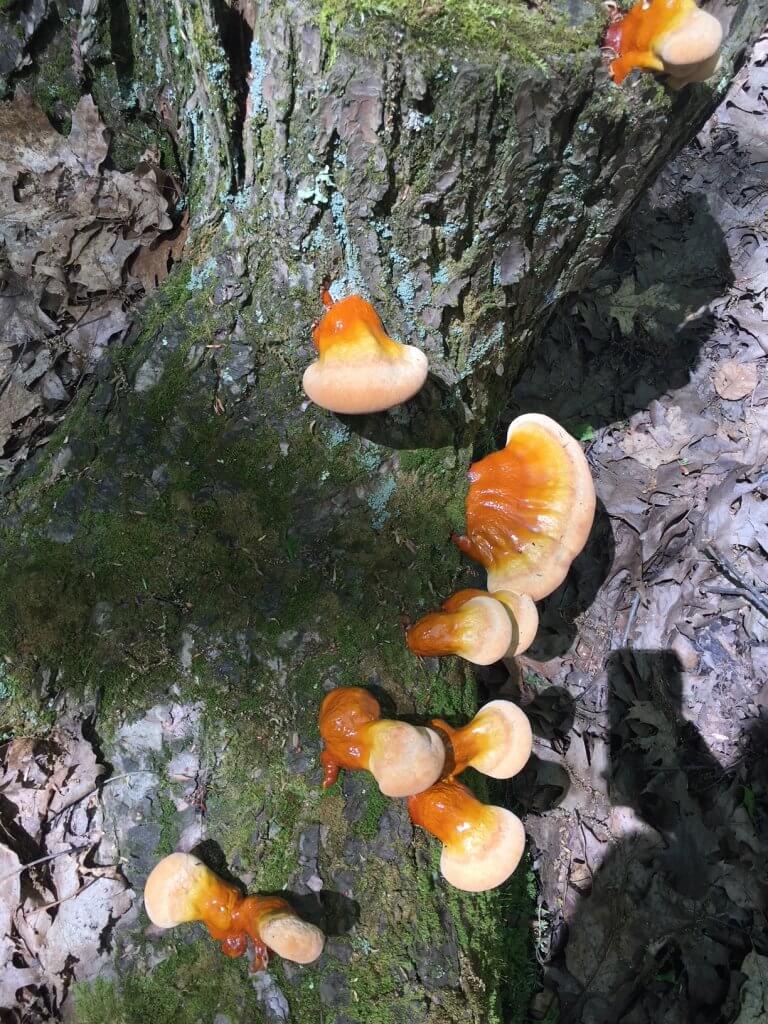
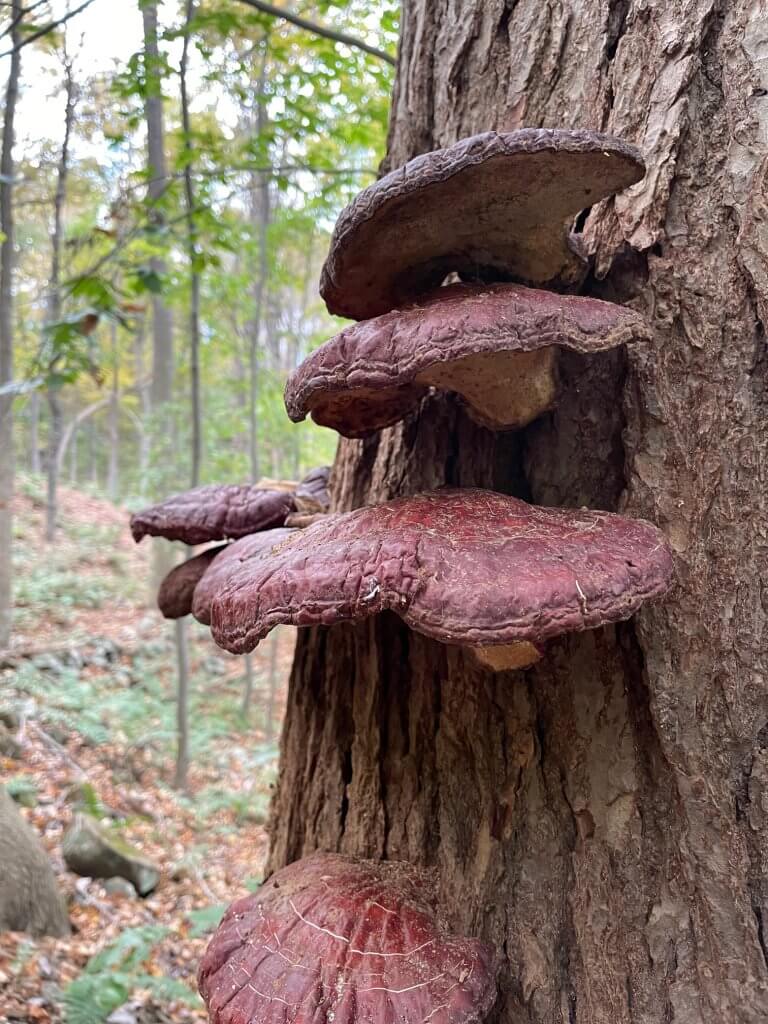
Medicinal Properties
Reishi mushrooms have been found to boost the immune system, provide stress relief, assist with sleep, regulate sugar levels, increase energy, and fight viral infections. Reishi mushrooms can also be used to treat heart disease, hypertension, high cholesterol, HIV/AIDS, and cancer. Reishi supplementation is part of standard practice in the treatment of cancer in Japan. Using reishi mushrooms, in addition to standard cancer treatment, can alleviate chemotherapy-induced nausea and enhance the efficacy of radiation therapy. Reishi mushrooms are also commonly used in Asia as a tea or elixir for their anti-aging properties. It is known as “the mushroom of immortality”.
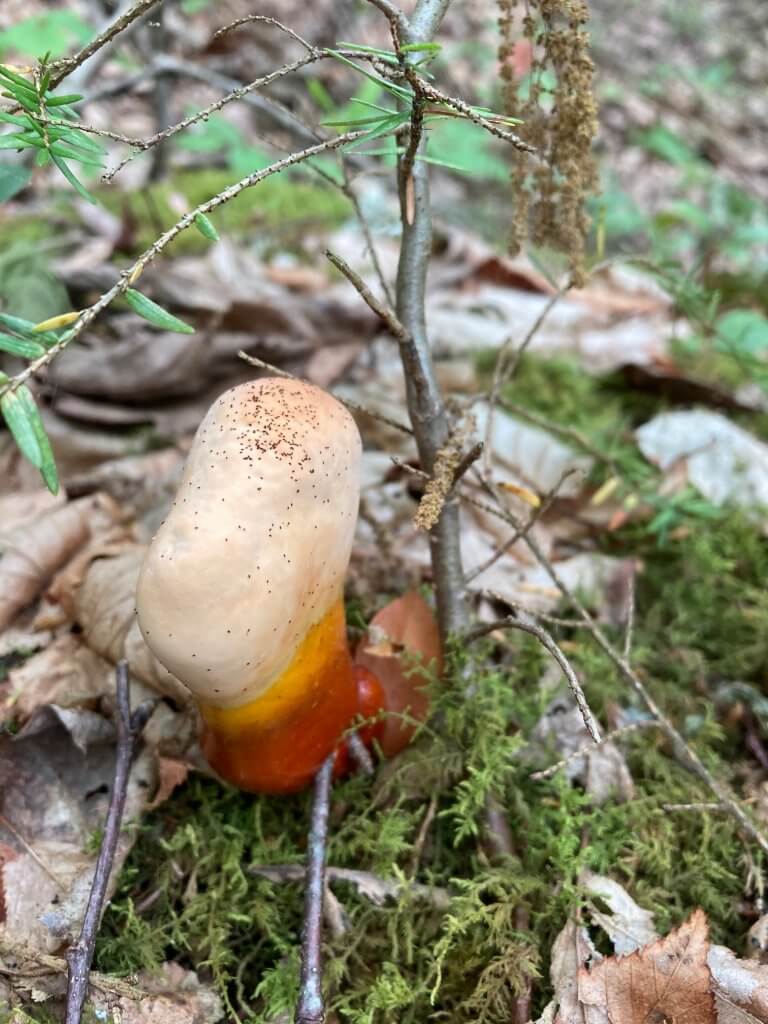
How to Consume Reishi
Reishi mushrooms are purportedly edible and tasty when found when they are first fruiting, before they start turning orange. However, once they start showing any orange, the mushrooms become too bitter to consume. At this point, the mushrooms must be turned into a tea or tincture to extract the medicinal compounds. Reishi have both water and alcohol-soluble compounds. The polysaccharides, providing the immuno-stimulating effects, can be extracted with hot water. Reishi tea is made by simmering fresh or dried reishi mushroom for 1-2 hours. The tea can be used to cook with, add to soup, or mix with coffee or chocolate. It has an earthy taste.
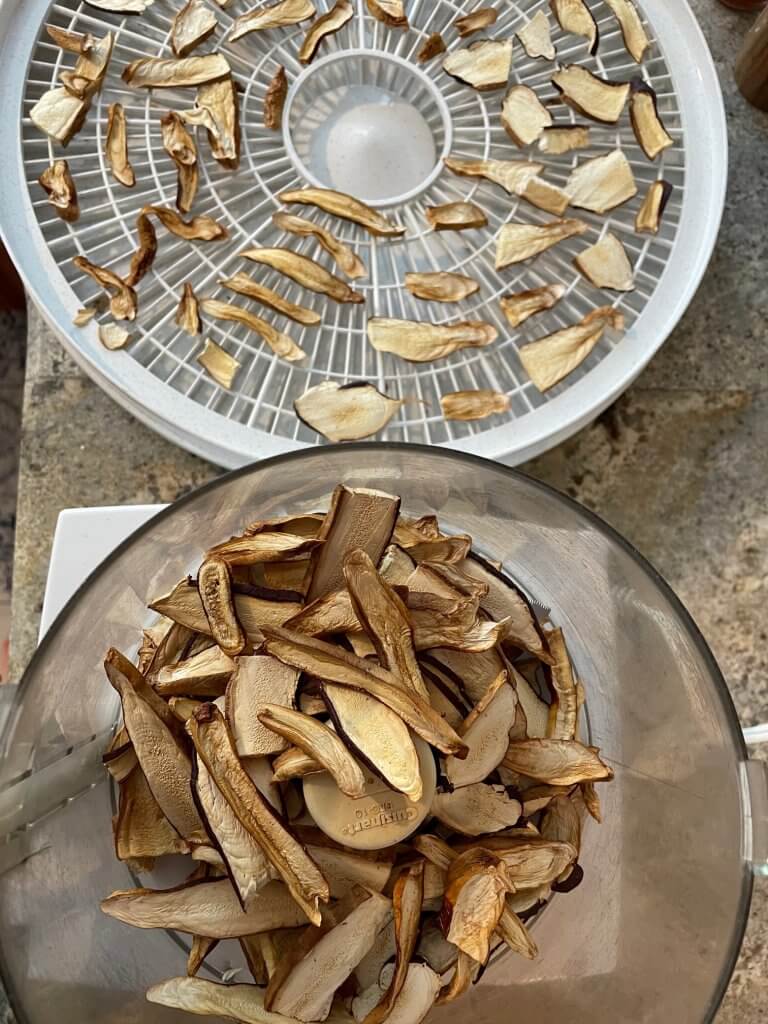
To extract the alcohol-soluble triterpenoids, the compound providing the cytotoxic effects, a tincture can be made. To make a reishi tincture, fill a jar half-way with powdered dried reishi. Pour 80-100 proof vodka in the jar. Let the jar sit for at least 2 weeks. Keep the reishi-infused alcohol, and put the mushroom mash in a pot with water. Simmer the mushrooms for at least 2 hours, until the water is halved. Add to the appropriate amount of mushroom tea to the alcohol to make the final product about 25% alcohol. This will ensure that the final product is shelf-stable. The reishi tincture will contain all the medicinal compounds found in the reishi mushroom.
Foraging for Reishi
Hemlock reishi mushrooms start to grow in New England in late May to early June. They start as a white knob with an orange base, fruiting from conifer trees. The underside will be white with tiny pores. The top of the mushroom darkens with age. By mid-summer, the top will be a dark reddish-brown color. The underside will also start to darken. Reishi mushrooms should only be foraged when the underside is completely white or cream colored. When the underside is darker, dangerous molds can be growing in the mushroom. New reishi mushrooms can occasionally be found growing late fall to early winter.
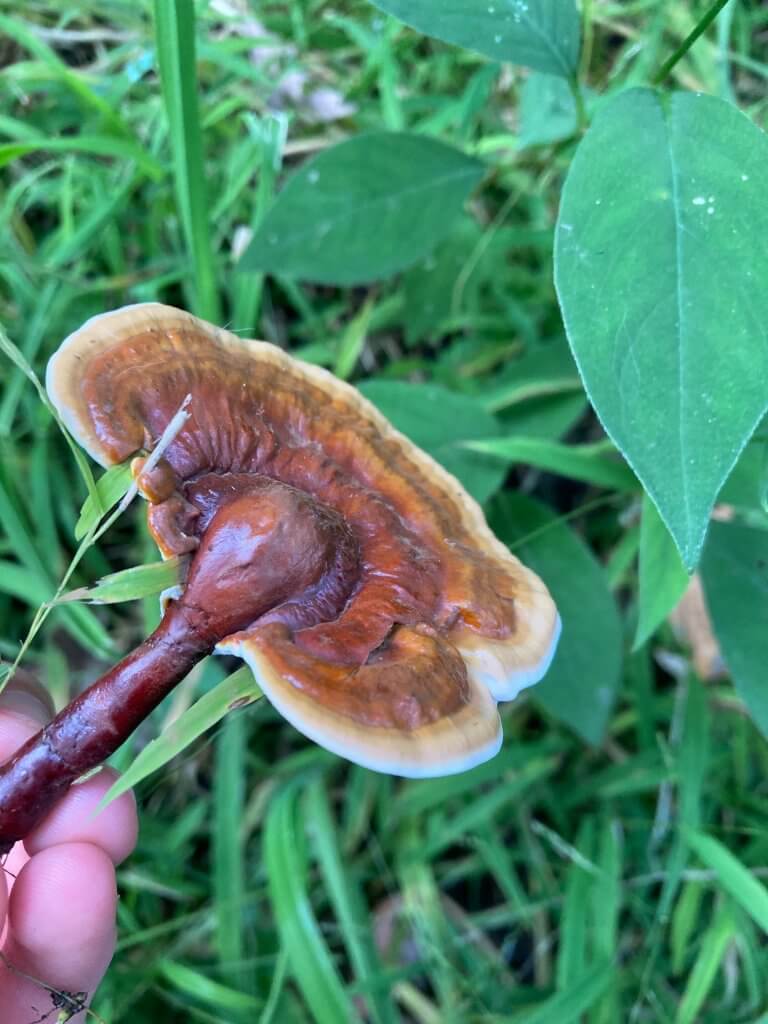
Hemlock reishi mushrooms can be mistaken for other polypores. Polypores are mushrooms with small pores on their underside, usually growing from trees. However, hemlock reishi have no poisonous look-a-likes. Ganoderma applanatum, or artist’s conks, are the third type of Ganoderma species that grows in New England. New artist’s conks are usually found growing in the fall, while new reishi mushrooms are most often found growing in the spring. Artist’s conks are always hard and woody, while young reishi mushrooms are soft and pliable. Artist’s conks caps are usually a shade of brown or gray, while reishi caps are orange to dark red. Artist’s conks can also be used medicinally, in a similar fashion to reishi.
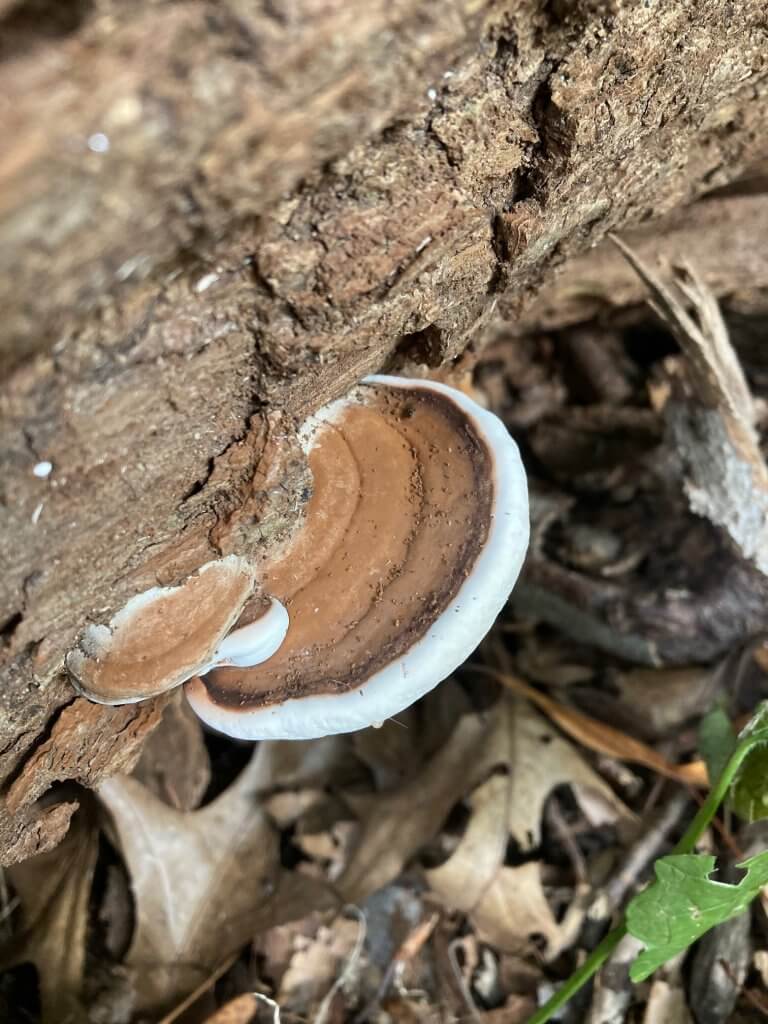
Hemlock reishi may also be mistaken for Ischnoderma resinosum, the resinous polypore. The resinous polypore grows in fall, stays tender as it ages, has a more brown-colored cap, and often has liquid droplets exuding from its cap. The resinous polypore is both edible and medicinal.
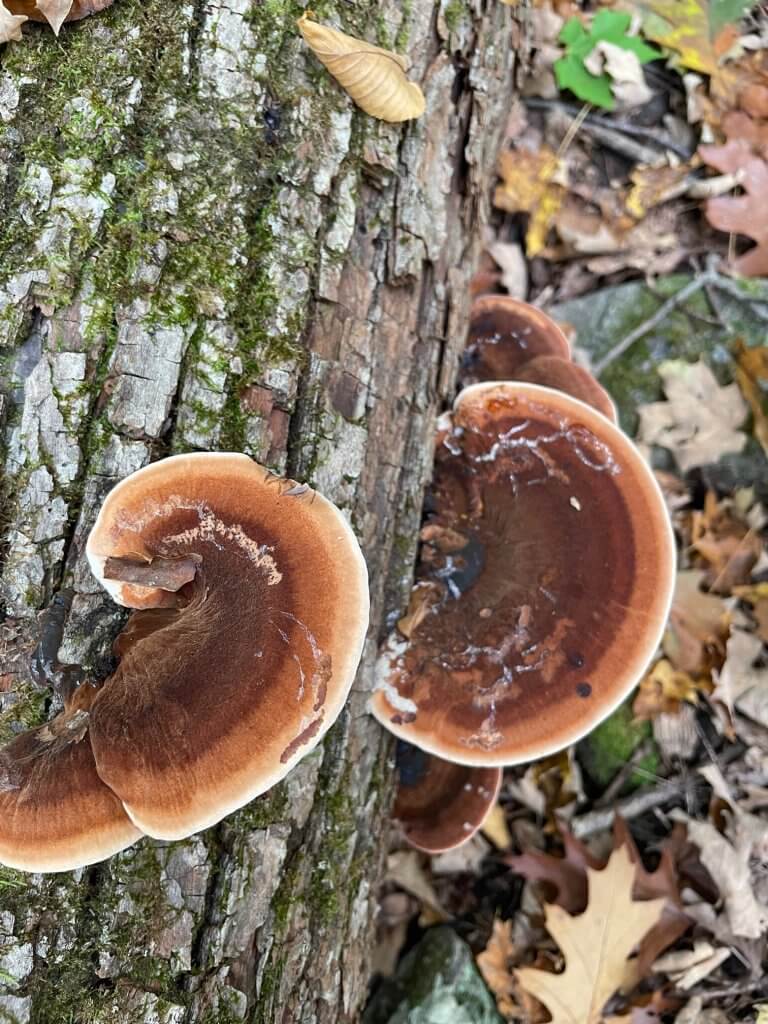
Hemlock reishi are an easy medicinal mushroom for novice foragers to learn. Reishi mushrooms have also been successfully grown indoors on sawdust, if you are apprehensive about foraging. As with all wild plants and mushrooms, you should be 100% positive on identification before consuming.
Written by Amy Demers
Amy Demers is the founder of the Connecticut Foraging Club. To learn about the club and join her walks or classes, you can check out the club’s Facebook page: https://www.facebook.com/Connecticut-Foraging-Club-102337615248927/ or email shroomsofct@gmail.com for more info.







4 Responses
Found on Tatum Gap Road near Andrews, NC
Found one at the park in Sonoma County, Santa Rosa CA
Ganoderma Oregonense is the western varnish conk that looks much the same. Given your location, could be you found this instead.
Great article on our local ganodermas! And the first i have heard of “dangerous mold” when tsugae is harvested without a cream colored base. When theyre mature and at the height of their medicinal properties, the bottom is seldom white anymore. But the alcohol and boiling of compounds should kill any mold present, should it not? In China, reishis are processed for medicine when they are completely brown all the way through!